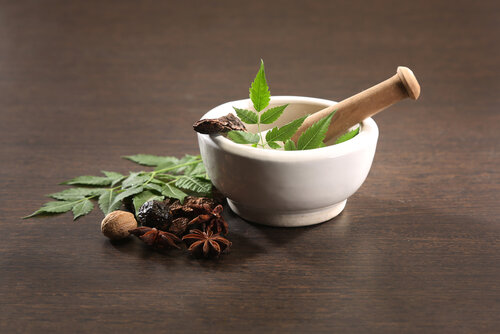
The Role of Herbs and Spices in Ayurvedic Medicine
Posted by Nikolai Matthews on 2023-01-10
Herbs and spices are one of the primary ingredients used in Ayurvedic medicine. They are used in cooking, as medicines, and in aromatherapy. They help to improve digestion, promote circulation, and boost the immune system. These herbs are available in many forms and are known for their diverse health benefits. Some of the most popular and common are turmeric, licorice root, fenugreek, and mangosteen. However, there are many more.
Getu kola
The Gotu Kola herb has been used for centuries as a folk medicine in India. It is considered to be a brain tonic. Known to improve skin health, it is also used for various ailments. In addition, it is a blood purifier.
Originally found growing along streams, the Gotu Kola plant is now grown in many parts of the world. Typically, the leaves are eaten whole, and the aerial parts are extracted as juice. Despite its bitter taste, it balances the Kapha and Pitta, and it is a popular herb in Sri Lankan cuisine.
It is known to strengthen the skin and has anti-inflammatory properties. In addition, it is an effective wound healer and promotes collagen production. For arthritis and other skin disorders, it can be taken in an oral form.
Fenugreek
Fenugreek is a seed of the Trigonella foenum-graecum plant. It is a highly nutritious plant with a number of benefits. Ayurvedic medicine has used fenugreek for many years to heal a wide range of ailments.
This herb has long been prescribed to treat digestive disorders. In ancient times, fenugreek was used to aid digestion and ease constipation. The seeds are also rich in mucilage, a substance that protects the gastric mucosa. They can be taken before or after meals.
Preliminary human studies suggest hypoglycemic and antihyperlipidemic properties. However, more research is needed to confirm fenugreek's effectiveness against these conditions.
Several animal studies have shown fenugreek's ability to reduce tumor growth. One study found that fenugreek extract decreased the growth of breast cancer cell lines.
Licorice root
Licorice is a herb that is used in Ayurvedic medicine to treat a variety of conditions. It is a very effective anti-inflammatory and an expectorant.
Licorice has also been shown to improve skin health. It is an antioxidant that increases capillary health and blocks arterial plaque. In addition, it is an expectorant, which relieves congestion. It also helps to heal wounds.
Licorice is also a powerful digestive aid. It has been found to be especially useful for those who have chronic acidity. The root can be taken as a tea or added to tea leaves.
Another use for licorice is to cure dry throat. Ancient Egyptians and Scythians frequently consumed licorice as an expectorant.
Manjistha
Manjistha is a popular Ayurvedic medicinal plant. It is known for its powerful anti-inflammatory and antioxidant properties. The plant is also used for improving skin conditions.
Manjistha has a rich concentration of flavonoids, lignans, and steroids. They are also known for their antioxidant and antimicrobial properties.
Aside from being an effective antioxidant, it is also considered a blood-purifying herb. This helps the body fight infection while also shielding the skin from damage caused by oxidative radicals. In addition, Manjistha has the ability to increase the immune system.
One of the most common benefits of Manjistha is its ability to cure high blood pressure. Other health benefits include its balancing properties and its role in controlling irregular cardiac rhythm. Furthermore, it is a great remedy for chronic cough and other respiratory troubles.
Shatavari
Shatavari is one of the most powerful herbs in Ayurvedic medicine. It is a phytoestrogen-rich herb that is used to treat menopausal symptoms. Shatavari is also used to improve reproductive health in women. This ancient medicinal herb is found in the Himalayas and Nepal.
Shatavari has a high concentration of steroidal saponins, which give it a sweet taste. This makes Shatavari a mild diuretic and anti-stress tonic. The phytoestrogen component also helps to regulate menstrual cycles.
Shatavari is most commonly prescribed as a powder. Most people mix it with milk or honey. For pregnant women, this amount can be increased to four tablespoons.
Cumin
In Ayurvedic medicine, cumin has a wide range of uses. It is an important component of most Ayurvedic decoctions, which are used to treat conditions such as malabsorption syndrome, dysentery, and diarrhea. Cumin also has therapeutic properties that are useful in treating various joint disorders and indigestion.
Cumin seeds are highly valued for their medicinal properties. They are known for their antimicrobial, astringent, and antioxidant activities. In addition, they are rich in phenols, flavonoids, and terpenes. These compounds may act as modulators of signaling pathways that control cell death.
Some studies indicate that cumin's essential oils have anti-fungal and antibacterial properties. The oil also has the ability to reduce inflammatory markers.